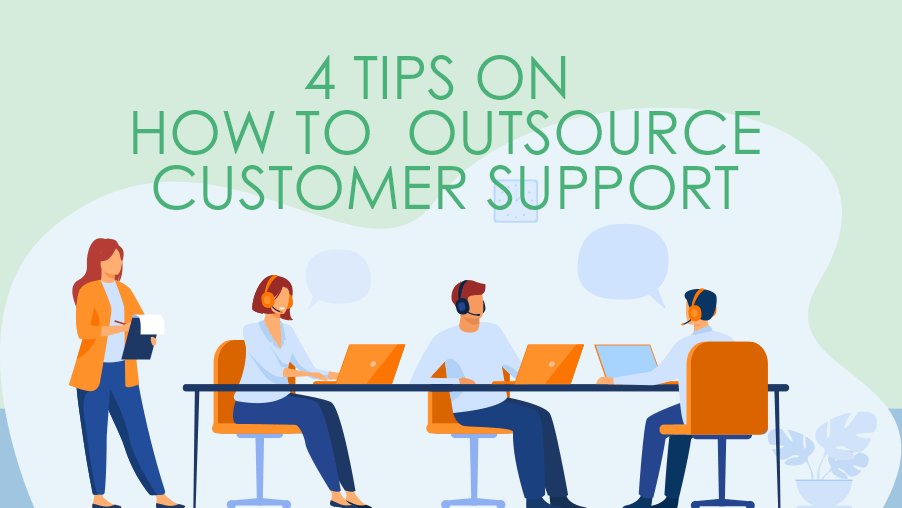How to Outsource Customer Support with These 4 Tips

How to Outsource Customer Support with These 4 Tips
Let’s say you need more customer support reps. A business process outsourcing firm (BPO) can provide them. But signing a contract is only the first step—you need a strong process for onboarding a BPO to set yourself up for long term success.
If you don’t get your outsourced team onboarded quickly, and fully trained on your processes, product, and voice, you risk delivering sub-par service to your customers. On the other hand, if you lay the groundwork properly during the first few months of the engagement, you can build a partnership that will help you deliver great customer service for years to come.
Business process outsourcing firms come in a variety of flavors and colors. Some focus on customer service, while others take on tasks such as data entry or sales. Some require minimum team sizes or 25 or more, while others are willing to take on clients who need just 1 or 2 agents to start. Regardless of which outsourcer you choose, the first few weeks are crucial.
Here are The Four Ts – our top four tips for onboarding a BPO.
1. Team: When onboarding a BPO, treat its agents as part of your team
Whether you are hiring two agents or 50, you want your customer service reps to reflect positively on your brand. To do that, they need to feel like they’re a part of your company. They need to understand your product, mission, and culture—and ideally, be passionate about it. If they’re excited about your company, they’ll communicate that to your customers.
So think about how you’d onboard a new team member in your home office. What would you communicate about your product, your company, your brand, to ensure they feel like a part of the team? That should be an integral part of your first days or weeks of training for your outsourced team.
And this commitment should continue as you manage the outsourced customer support team over time. As just one example: Peak Support is a business process outsourcing firm with an entirely remote team. One of our clients regularly buys frozen yogurt for its internal team when the ticket queue hits 0. So we started hosting Virtual Frozen Yogurt parties for our agents, distributing a small bonus for each team member to buy a treat for themselves and their family. It instantly drove a sense of fairness and camaraderie.
2. Training: Develop a comprehensive training program
At some companies, training is sometimes informal. The customer service or operations manager sits with a new hire and shows them what they need to know. A good business process outsourcing partner may be able to take those informal conversations and develop a formal training program. But you’ll still need a comprehensive list of topics to cover.
Your training should cover:
- Company history, mission, and values
- Your product or service, including the nitty gritty details. At our apparel clients, we learn about the stitching. Yep, it’s that detailed
- Voice
- Technology systems
- Customer service processes
In particular, be clear about how much “agency” you expect your agents to have. Do they have leeway to make decisions if, for example, a customer demands a refund? Or must they follow a narrow set of rules? It helps to develop a best-in-class library of tickets that showcase both your voice and the proper way to follow company processes. And make sure to define an escalation process, in case an agent gets a question they haven’t been trained on.
Don’t forget to include all the technology systems your agents will need to use. Of course, they’ll need access to Zendesk or whatever ticketing system you use. Will they need access to Shopify? What about your fulfillment center? And consider any new systems you might need to adopt, now that you’re working with an outsourcer. For example, Zendesk’s new Overflow and After Hours Routing feature allows teams to route calls to an overflow number, outsourcer, or answering service, if all your in-house agents are busy.
3. Timeline: Lay out timelines for the short and long term
For the short term, what is your schedule for the first day and first week of onboarding the business process outsourcing firm? What about the second week? For the medium to long term, which tickets do you want your outsourcer to manage? Will they take Tier 1 tickets in the first three months, and then add Tier 2?
Also, what is your meeting cadence? Set up a regular check-in with your account manager, both during and after the training period.
4. Targets: Set clear, realistic, and measurable targets
If you already have Key Performance Indicators, communicate them to the outsourcer and align on when they’ll be expected to meet them. An outsourced team won’t perform as well as your team from the start, but they should gradually get up to speed. If you don’t have KPIs, work with the outsourcer to set them. You need an objective way of measuring your outsourcer’s performance.
In some cases, international teams won’t match the productivity of an in-house team – it depends on the level of cultural knowledge required for your product or service. So think about cost-effectiveness instead. If your international team is 80% as efficient as your in-house team, but costs 50% less, you’re still getting a great deal.
Bringing on an outsourcer is a major transition for a company. You’re trusting a critical piece of your operations to an external partner. So treat your outsourcer like a key hire. Making them feel like a part of your Team, developing a comprehensive Training program, aligning on a clear Timeline, and setting realistic Targets will establish a strong foundation for success.
This article was first published in Zendesk.
If you want to learn more about scaling customer support, download our e-book “Scaling Customer Support for Your Growing Business.”


